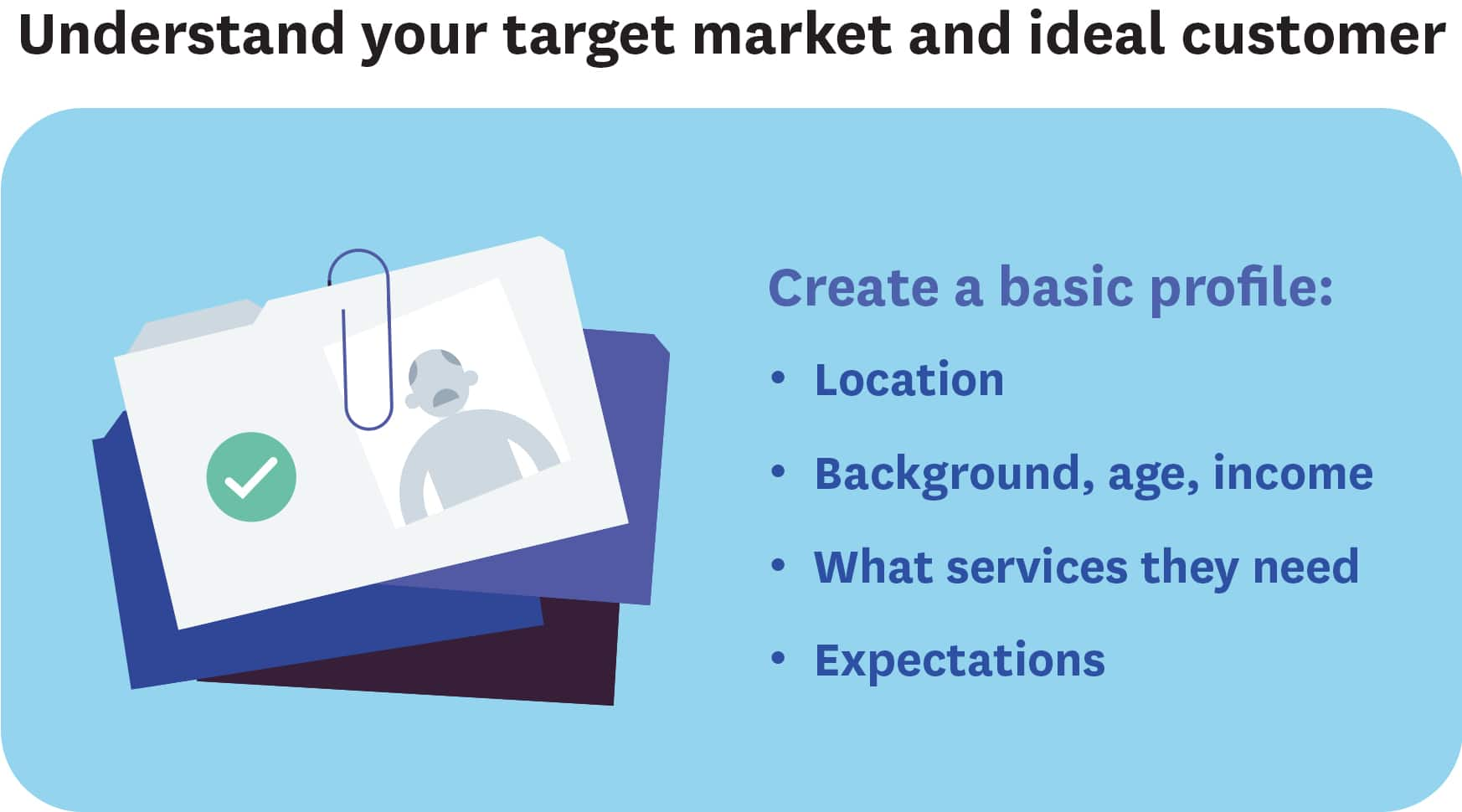How to start a handyman or handywoman business
If you’re practically minded, learn what’s involved in setting up as a self-employed handyman or handywoman.

Why start a handyman/handywoman business?
Do you have strong fix-it type skills around your home? Are you the person your friends and family rely on to fix things in their home? Have you ever thought about starting your own handyman or handywoman business? If you have the talent and skills, launching a home repair business can be exciting and rewarding, especially if you’re good at fixing things around the house. However, there are some pros and cons that come with the opportunity.
Here’s a closer look at the possible advantages and disadvantages of starting your own business in home repair.
Pros
Reasons why you might choose his kind of business include:
- Relatively low startup costs: The entry costs can be low, particularly if you already own some tools.
- Limited equipment needed: You may already have what you need to get started, so you can get up and running quickly.
- Setting your own hours: You can decide how much you want to work and whether you want to be full-time or part-time.
- Picking the services you want to offer: You can stick to simple tasks around the house like putting up shelves or installing new lighting that are easy to do and profitable.
- Choosing your jobs: You can decide on what types of jobs to do, either sticking to the straight-forward ones or taking on more challenging tasks.
- Being your own boss: You’ll be working for yourself and answerable only to your customers.
- Job satisfaction: You’ll get satisfaction from helping customers improve their homes.
Cons
Reasons why you this kind of business might not be for you include:
- Involves manual labor: Be prepared for work that can be physically demanding.
- You need to be practically inclined: Being handy around the house is essential. You’ll need mechanical skills and know how to use tools. If this isn’t one of your strengths, it may not be a great fit for you.
- Expertise and experience are required: For some tasks, having professional certification may be required. For others, having a background working in the trades will be critical to your success.
- Finding customers may take time: You’ll need to put in time, effort, and money to find jobs.
- You’ll need equipment: You’ll need to purchase the necessary tools if you don’t already have access to them.
- Dealing with customers: Customer skills are required. Some homeowners can be demanding.
- Pay can be variable and inconsistent: It may be stressful to make ends meet, especially when starting out, as you won’t be on someone else’s payroll. Since this is not a 9-to-5 job, you have no guarantees on how much you will make.
- Business can be seasonal: Working as a handyman/handywoman can be seasonal – busy in some periods and slow in others.
- Licensing costs: There could be red tape, and specific permits may be required for certain jobs.
- Working outdoors: Many jobs will be outside where weather conditions are a factor.

11 tips for starting a handyman or handywoman business
A handyman or handywoman deals with home repair and routine maintenance in people’s homes. This is different to being a general contractor. The average handyman/handywoman has learned their trade through hands-on experience working on different types of jobs.
Depending where you live, your province may limit the jobs you can do, up to a specific dollar amount. It’s possible that you might need a handyman/handywoman license for some jobs like skilled trades like plumbing, electrical wiring, or HVAC.
If you’re looking to set up your own home repair business, here is a step-by-step guide to get started:
1. Research and develop a business plan
If you want to start your own handyman or handywoman business, the first step is to write a business plan. You can write your vision for your business on paper and identify your strengths, weaknesses, and who your competitors are. Your business plan will include:
- Executive summary: A summary captured in one page or less
- Company overview: Describing the details of your service business
- Industry analysis: Assessing the target market area of the business
- Customer analysis: Identifying your likely customers and target audience
- Competitive analysis: Evaluating the local competition
- Marketing plan: Picking a business name and expressing your USP (unique selling proposition) and strategy for attracting new customers
- Operations plan: Outlining how your business will operate
- Financial plan: Detailing your plan for financing the business
You may want to work with an attorney to draw up a service contract for your clients to sign, especially for larger jobs. A service contract lays out the terms and conditions of service, and establishes legal protection for both parties. Its purpose is to clarify client expectations and minimize the risk of legal disputes by laying out payment terms.
2. Define your target market
It is crucial to identify your target market for customers. In your ideal customer profile (or buyer persona), include factors such as:
- demographics, such as age, income, family status
- physical location
- the kind of customer requests that you can assist with
- the features they seek in a service provider, such as efficiency and price
Make sure that your service offering aligns with your customers’ expectations. For example, customers may be looking for someone affordable who can do quality work at a reasonable price.

3. Choose a business structure
Choosing the right business structure is one of your most important decisions when starting a business. The main types of business structure are sole proprietorship, partnership, and corporation. If you don’t choose a structure when starting a business, you’ll be assumed to be a sole proprietor. That’s how a lot of people start out.
A sole proprietorship is the simpler one and has very little paperwork for setting up.
Sole proprietorship
A sole proprietorship is an unincorporated business. It has one owner, and it is the simplest type of business structure. As a sole proprietor, there’s no legal separation between your personal assets and your business assets and expenses. As a result, you’re personally responsible for all of the debts and obligations of your business.
Individuals doing contract work, such as freelancers or consultants, often choose to file their business taxes as sole proprietors. It is the simplest way of doing it and doesn’t involve the costs of forming an LLC.
Partnership
A partnership is owned by two or more people. There are no rules about how it’s divided. One partner can own 99% of the business. It’s easy to set up as a partnership, though it’s recommended you have an official letter that sets out the agreement between partners. Tax is simple too. You just declare your share of business income on your personal tax return.
3. Apply for a business license
You’ll need to look up your provincial laws regarding handyman/handywomen businesses. You might have to get specific certifications, permits, and/or licenses, for example, if the jobs are related to plumbing, electrical, or HVAC. You may have to get a license to do jobs above a certain dollar amount. You can find out what federal, provincial/territorial and municipal government permits and licences you may need through BizPaL.
You may have to pay income tax, and federal and provincial sales tax, so the Canada Revenue Agency (CRA) and provincial tax offices will need to know about your business. In some provinces and territories, you will automatically receive a business number and relevant tax accounts when you register or incorporate your business. In others, you’ll have to apply separately.
4. Determine which handyman services you will offer
Determining what services to offer your customers is an important part of your business startup. They might include:
- Building and assembling furniture, such as IKEA-type furniture
- Anchoring items on walls, such as TVs
- Painting home items, including cabinets and furniture
- Minor painting of walls and fixtures
- Fixing appliances (minor repairs)
- Outdoor repairs like fixing mailboxes
- Fixing gates and fences outdoors
- Replacing air conditioning and furnace filters
- Making a home accessible for the disabled
- Childproofing a home
- Hanging up pictures and shelves
- Leaky faucet or pipe repair
- Replacing window screens
- Light fixture replacement, like overhead lights
- Installation of curtains, blinds, and shades
- Kitchen and bathroom tile installation
- Cleaning windows and gutters
You can decide which services you would like to specialize in, if any. Even something as simple as assembling furniture can be lucrative.
6. Open a business bank account
Keep your personal and business finances separate. A business bank account separates your business expenses separate from your personal spending and makes accounting and tax filing more straightforward.
7. Determine what equipment you will need
Whatever your client’s home improvement project, you will need the right equipment, a roadworthy vehicle, and the necessary supplies to meet your client’s needs. These include:
- Tools and equipment: You’ll need basic tools like an extension ladder, basic tool kit, sander, cordless drill, handsaw, and safety equipment for every job.
- Transportation: Having your own vehicle – either owned or rented – in good working order is a must.
- Local suppliers: Find a reliable local supplier for items such as nails, paint, and anything else that you may need.
8. Startup costs
A handyman or handywoman business starts with good financial planning. Make a list of everything your business will need, and how much it will cost. If you don’t have sufficient startup capital, you could consider:
- personal savings
- a loan from family or friends
- grants and funding from the Government of Canada
- a business loan or business line of credit
- using credit cards
9. Set your prices
Have a price list in place before you offer your services to customers. Do your research to see what your competitors are charging in the local area. Factors to consider include:
- Overhead costs: Calculate your hourly overheads by estimating your running costs for marketing, phone bills, transportation, and so on.
- Labor costs: FIgure out how much to charge by multiplying your hourly labor rate by the hours it will take to complete the job.
- Profit margin: After all of your expenses are deducted from your gross earnings, you will have the amount of profit
- Taxes: Calculate what income tax bracket you’ll fall into and how much you’ll need to pay. Includes sales tax, if applicable. Set aside the money to pay for your taxes.
10. Get business insurance
There are a variety of insurance plans to consider as a handyman or handywoman. Handyman insurance may include:
- General liability insurance: To protect you against claims for bodily harm and property damage.
- Commercial auto insurance: To cover the vehicle you use for the job.
- Professional liability insurance: To protect against work mistakes.
11. Market your handyman/handywoman small business
Marketing your handyman/handywoman business may help you find new customers. Look for your potential customers where they spend time online and in real life. Here are some tips:
- Word of mouth: This is the best channel for building a handyman or handywoman business. Ask your customers to refer you to other business, and offer them something in return. Also ask them to support you with positive online reviews.
- Social media profiles: Open business accounts on Facebook, Twitter, TikTok, or Instagram where customers spend their time.
- Business sites: Set up a Google business profile. Also list your business on platforms like Yelp for Business, and Bing Places.
- Local advertising: List your local handyman services in area community newspapers.
Start using Xero for free
Access Xero features for 30 days, then decide which plan best suits your business.